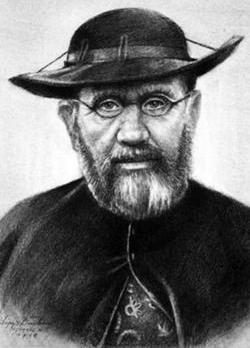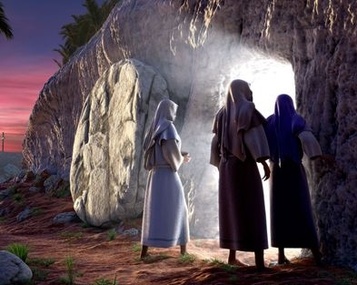
He arrived in Honolulu in 1864, and on his ordination there he took the name Damien. For eight years he served on the Big Island of Hawaii, but his service had hardly begun. In the early 1870’s the government of Hawaii felt forced to confine hundreds of sufferers from the terrible and then untreatable disease of leprosy (Hansen’s Disease) on a remote peninsula of the island of Molokai. The conditions for those in the quarantined community were appalling, but Damien was the first to volunteer to go to serve these people – knowing full well that in doing so he risked his own life.
On May 11, 1873, the thirty-three year old Damien was introduced to the colony at Kalawao on Molokai by the Catholic Bishop of Hawaii who told the crowd of doomed and dying that he had brought them someone “who will be a father to you … who loves you so much that ... he does not hesitate to become one of you; to live and die with you.” Damien learned the Hawaiian language and threw himself into the work of serving the colony. He immediately organized the building of a church and became a priest to the group, but he also worked with his hands to serve them. He built homes for the people, constructed a water system, made furniture, constructed coffins and dug graves as they were needed. More importantly, he showed the outcast and rejected leprosy sufferers acceptance in a way no one else did. He worked directly with them, dressing their ulcers, comforting and encouraging them daily.
As a result of Damien’s service and the hope he instilled, the community was transformed. Makeshift shacks were turned into painted houses, farms and gardens were established, and even schools were organized. The people of the colony came to love him greatly and when Damien had opportunity to leave the island to be replaced by another priest, he elected to stay on. It is clear that the people he served had become his life. Even as early as six months after his arrival on Molokai Damien had written to his brother “...I make myself a leper with the lepers to gain all to Jesus Christ.” The statement would, of course, be proven true.
In 1884 it became clear that Damien had contracted leprosy. Despite the disease he continued to work to build as many homes as possible and to plan for the successful continuation of the community. Damien died of the terrible disease he had helped others live with on April 15, 1889, at the age of 49. He was mourned not only by the people of the colony, but also by many Hawaiians who knew of the work of the man they called “Papa Kamiano [Damien] o Molokaʻi.”
Damien’s work resulted in a greatly increased awareness of the disease of leprosy and the plight of its victims worldwide. His life and death also remain an inspiring testimony to the potential impact of the Christian faith on even the harshest and saddest conditions that occur in this world.





 RSS Feed
RSS Feed
